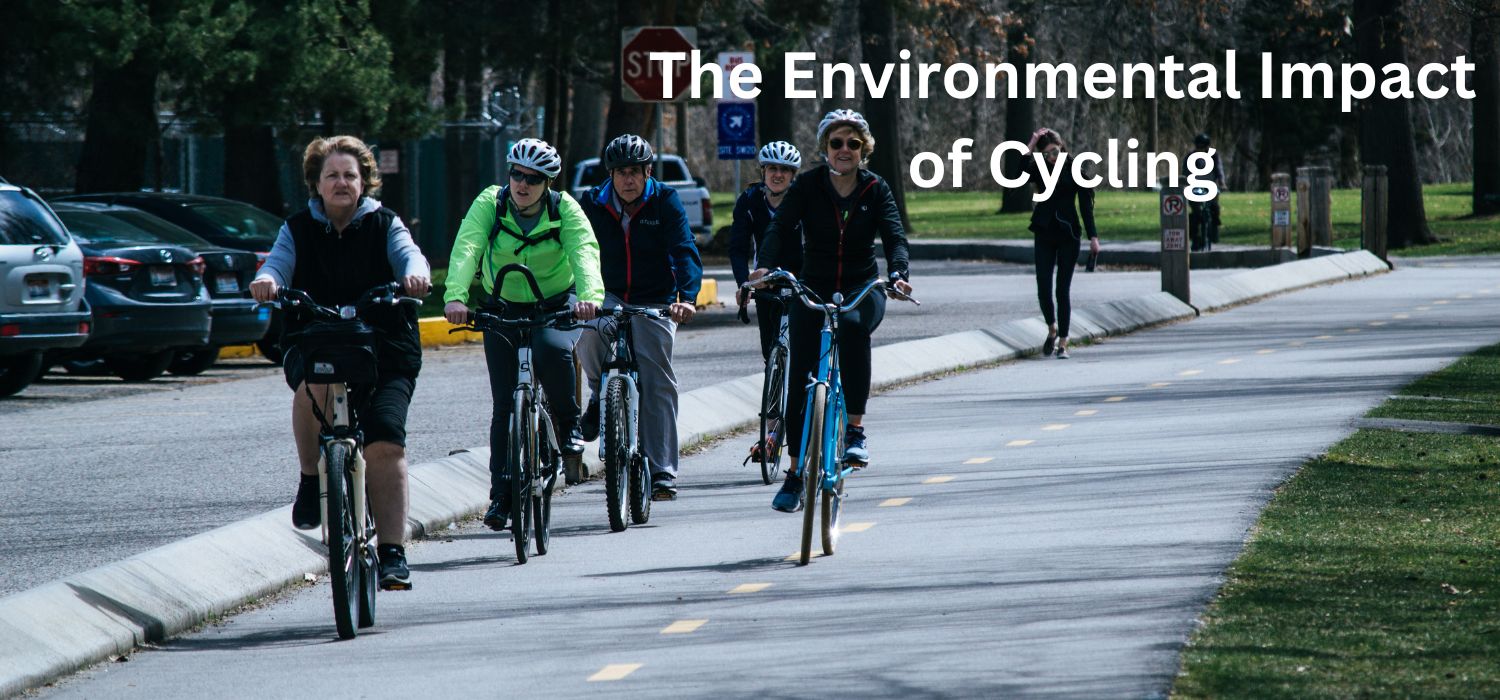Cycling is not just a mode of transportation; it’s a powerful tool for environmental conservation. As concerns about climate change and pollution grow, more people are turning to bicycles as a sustainable alternative to motor vehicles. The environmental impact of cycling is profound, offering numerous benefits that contribute to a healthier planet. This blog explores how cycling reduces carbon emissions, decreases air and noise pollution, conserves resources, and promotes green urban spaces.
Read More: Master the Basics: How to Teach a Kid to Ride a Bike
Reducing Carbon Emissions
One of the most significant environmental benefits of cycling is its potential to reduce carbon emissions. Motor vehicles are major contributors to greenhouse gas emissions, which drive climate change. In contrast, bicycles produce zero emissions. According to the European Cyclists’ Federation, cycling 10 km to work instead of driving can save approximately 1,500 kg of CO2 emissions per year. By choosing to cycle instead of drive, individuals can significantly reduce their carbon footprint.
Decreasing Air Pollution
Air pollution is a critical issue in many urban areas, with vehicle emissions being a major source of pollutants such as nitrogen oxides (NOx) and particulate matter (PM). These pollutants have severe health impacts, including respiratory and cardiovascular diseases. Cycling helps mitigate this problem by reducing the number of motor vehicles on the road. A study conducted in the Netherlands found that increasing cycling by 10% could reduce NOx emissions by 40% and PM emissions by 15%, leading to cleaner air and healthier communities.
Reducing Noise Pollution
In addition to air pollution, motor vehicles contribute to noise pollution, which affects human health and quality of life. Chronic exposure to traffic noise can lead to stress, sleep disturbances, and increased risk of heart disease. Bicycles, being virtually silent, offer a peaceful alternative. Promoting cycling in urban areas can help create quieter, more pleasant environments, enhancing the overall well-being of residents.
Conserving Resources
The production and maintenance of bicycles require far fewer resources compared to motor vehicles. Manufacturing a bicycle uses significantly less metal, rubber, and plastic. Moreover, bicycles have a longer lifespan and lower maintenance needs, reducing the demand for raw materials and the environmental impact of production and disposal. Additionally, cycling infrastructure, such as bike lanes and parking, is less resource-intensive to build and maintain than roads and parking lots for cars.
Promoting Green Urban Spaces
Cycling supports the development of green urban spaces. Cities that prioritize cycling often invest in bike lanes, parks, and greenways, which not only provide safe routes for cyclists but also enhance urban biodiversity and provide recreational areas for residents. Green spaces improve air quality, support wildlife habitats, and offer natural cooling effects, which are crucial in mitigating urban heat islands.
Reducing Traffic Congestion
Traffic congestion is a major problem in many cities, leading to increased emissions, fuel consumption, and lost productivity. Cycling is a space-efficient mode of transport that can help alleviate congestion. Bicycles take up much less space than cars, both on the road and when parked. A single car parking space can accommodate up to ten bicycles. By reducing the number of cars on the road, cycling helps improve traffic flow and reduce the environmental impact of traffic jams.
Encouraging Sustainable Behavior
Cycling can act as a gateway to other sustainable behaviors. People who choose to cycle are often more aware of their environmental impact and are likely to adopt other eco-friendly practices, such as recycling, conserving energy, and supporting sustainable products and policies. This shift in mindset can lead to broader environmental benefits beyond the immediate impact of reduced vehicle use.
Conclusion
The environmental impact of cycling is undeniably positive. By reducing carbon emissions, air and noise pollution, conserving resources, and promoting green urban spaces, cycling offers a sustainable and healthy alternative to motorized transport. As cities and individuals continue to embrace cycling, the potential for creating cleaner, greener, and more livable environments grows. Encouraging cycling not only benefits the environment but also enhances the quality of life for everyone. It’s a simple, effective, and enjoyable way to contribute to a more sustainable future.
FAQ on the Environmental Impact of Cycling
Q1: How does cycling reduce carbon emissions? A1: Cycling reduces carbon emissions by replacing trips that would otherwise be made by motor vehicles, which are major sources of greenhouse gases. Bicycles produce zero emissions, significantly lowering the carbon footprint of transportation.
Q2: What is the impact of cycling on air pollution? A2: Cycling helps decrease air pollution by reducing the number of motor vehicles on the road, which emit pollutants such as nitrogen oxides and particulate matter. Increased cycling can lead to cleaner air and improved public health.
Q3: How does cycling contribute to noise reduction? A3: Bicycles are virtually silent compared to motor vehicles, which helps reduce noise pollution. This creates quieter, more pleasant urban environments and reduces stress and health risks associated with chronic noise exposure.
Q4: What resources are conserved by using bicycles instead of cars? A4: The production and maintenance of bicycles require fewer resources than motor vehicles. Bicycles use less metal, rubber, and plastic, and have lower maintenance needs, reducing the demand for raw materials and environmental impact.
Q5: How does cycling promote green urban spaces? A5: Cities that prioritize cycling often invest in bike lanes, parks, and greenways. These developments enhance urban biodiversity, improve air quality, and provide recreational areas, contributing to more sustainable and livable cities.
Q6: What effect does cycling have on traffic congestion? A6: Cycling reduces traffic congestion by taking up less space on roads and requiring less parking space. This improves traffic flow, reduces emissions from idling vehicles, and enhances overall urban mobility.
Q7: Can cycling influence other sustainable behaviors? A7: Yes, cycling often encourages individuals to adopt other eco-friendly practices, such as recycling and conserving energy. Cyclists tend to be more environmentally conscious, which can lead to broader sustainable behavior changes.
Cycling is a powerful tool for reducing environmental impact and promoting sustainability. By embracing cycling, we can contribute to a cleaner, healthier, and more sustainable world.

